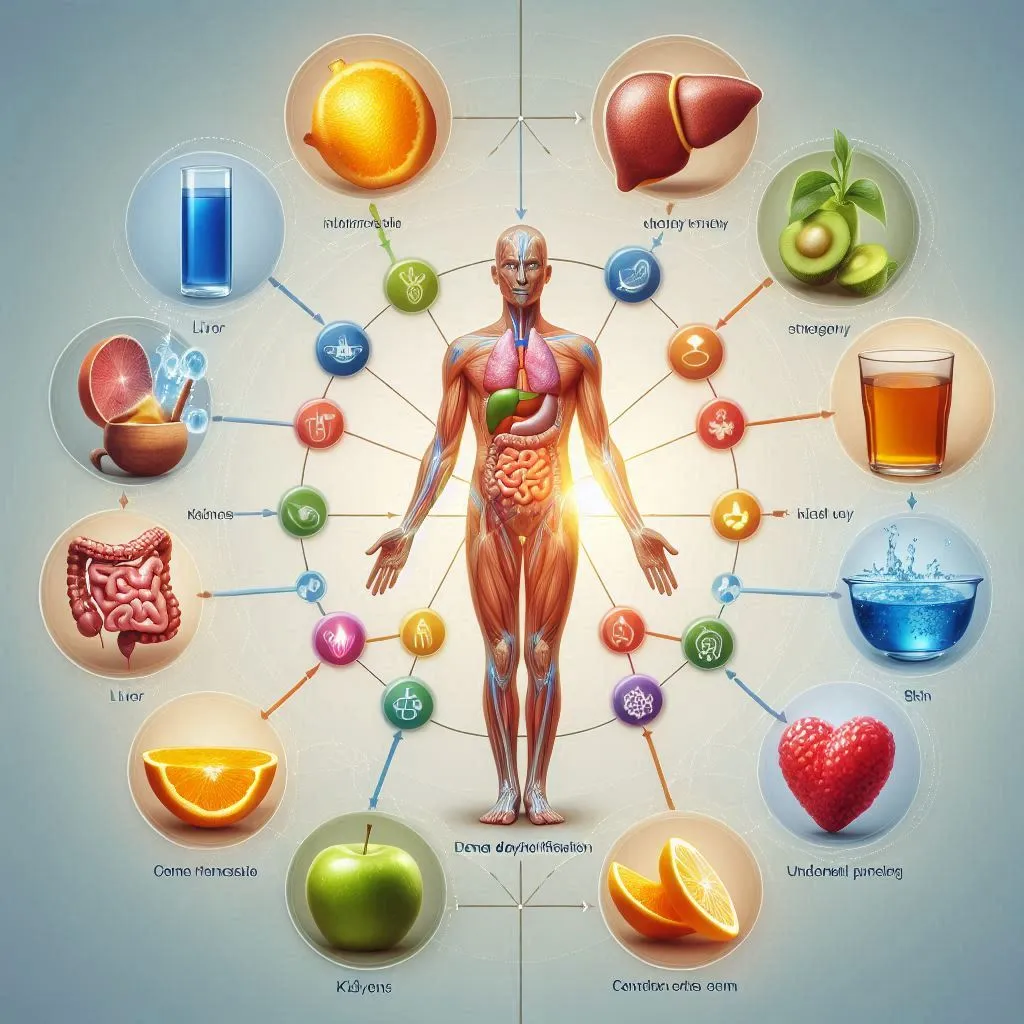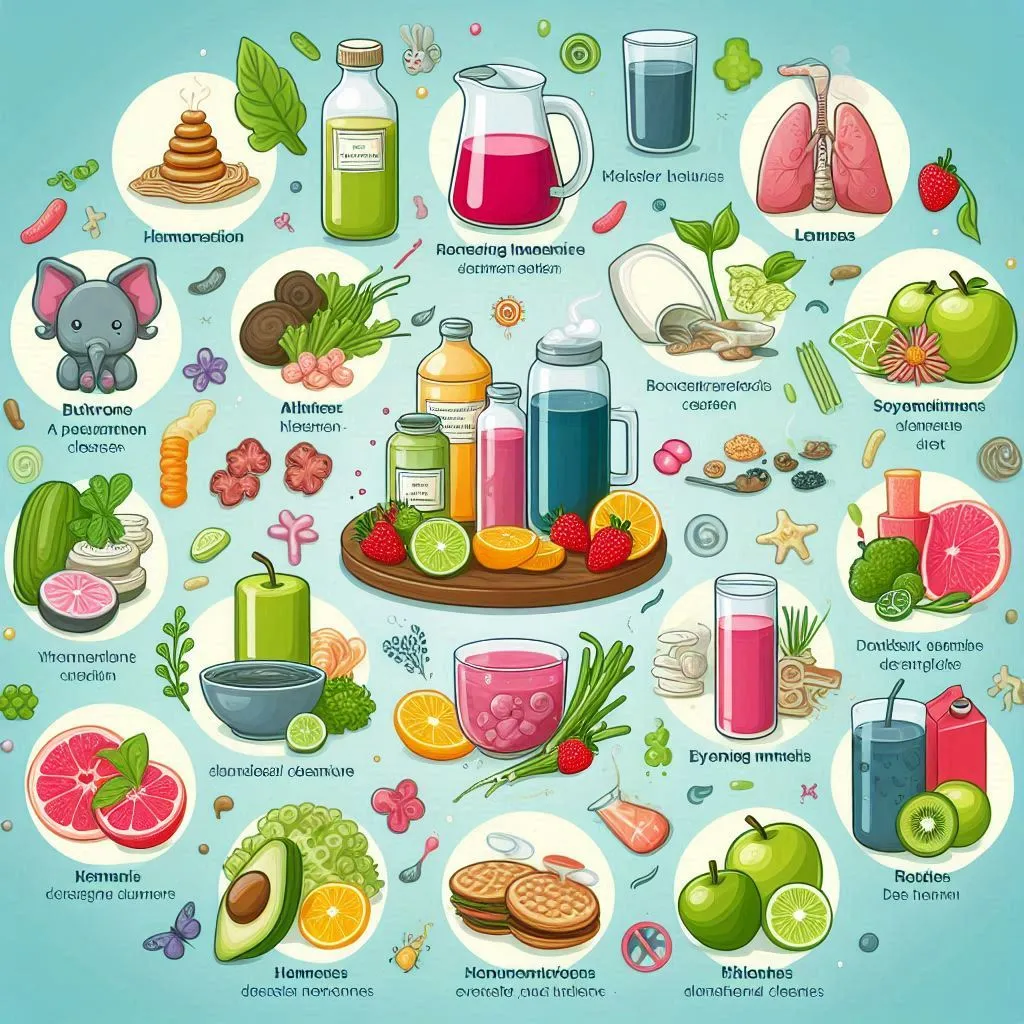Introduction
Have you ever wondered what comes out of your body when you cleanse ? The concept of detoxification has gained immense popularity in recent years, but many people still question its true effects. Beyond the trendy juice fasts and herbal teas lies a fascinating process where your body naturally expels toxins, waste products, and byproducts of metabolic activity. Understanding what toxins leave the body during a detox or what waste products are removed during cleansing can transform the way you approach health and wellness.
From heavy metals stored deep within fat cells to environmental pollutants lingering in your system, your body is constantly working to eliminate these harmful substances. But how exactly does this happen? And more importantly, what signs indicate your body is detoxing ? Whether you’re considering a liver cleanse, kidney flush, or colon detox, knowing what comes out of your body when you cleanse empowers you to make informed decisions about your health journey.
In this comprehensive guide, we’ll break down the science behind detoxification, explore the specific toxins and waste products expelled during cleanses, and provide actionable tips for maximizing results. If you’ve ever felt curious about what your body releases during sweating , how detox works in the body , or even what happens inside your body during a cleanse , you’re in the right place. Let’s dive in and uncover the truth about detoxification!
Table of Contents

1. What Comes Out of Your Body When You Cleanse: Understanding the Output
Cleansing is often misunderstood as a one-size-fits-all process, but the reality is that different cleanses target specific areas of the body and result in unique outputs. To fully grasp what comes out of your body when you cleanse , let’s break down the substances and byproducts expelled during various types of cleansing programs.
1.1 Waste Products Removed During Detox
During a cleanse, your body releases several forms of waste and toxins accumulated over time. These include:
- Metabolic Waste : Byproducts of normal bodily functions, such as urea and carbon dioxide, are continuously eliminated through urine and breath.
- Environmental Toxins : Pesticides, heavy metals (like mercury and lead), and other pollutants stored in fat cells can be released during detoxification.
- Undigested Food Particles : A colon cleanse helps flush out old waste matter trapped in the intestines, improving digestion and nutrient absorption.
For example, if you’ve been consuming processed foods or exposed to environmental toxins, a cleanse might result in more frequent bowel movements or darker urine as your body works to eliminate these harmful substances.
1.2 Substances Removed During Specific Cleanses
Different cleanses focus on eliminating specific types of toxins, leading to varied outputs:
- Liver Cleanse : Targets toxins stored in fatty tissues, resulting in improved bile production and reduced liver strain.
- Kidney Cleanse : Removes uric acid and excess salts, promoting clearer urine and healthier kidney function.
- Colon Cleanse : Expels undigested food particles and waste buildup, leading to softer stools and increased regularity.
- Sweat-Based Cleanses (e.g., Saunas) : Release toxins like BPA and phthalates through sweat, leaving your skin cleaner and fresher.
Understanding these outputs allows you to choose the right cleanse for your needs and track its effectiveness.
1.3 Measuring What Comes Out of Your Body
To better understand what comes out of your body when you cleanse , consider tracking changes in:
- Urine Color and Frequency : Darker urine may indicate toxin release, while lighter urine suggests hydration and toxin elimination.
- Bowel Movements : Increased frequency and softer stools signal effective colon cleansing.
- Skin Condition : Improved clarity and fewer breakouts reflect reduced toxin levels.
By monitoring these indicators, you gain insight into how your body responds to cleansing and whether it’s achieving desired results.

2. Understanding the Detoxification Process
2.1 How Does Detox Work in the Body?
Detoxification is not just a trendy buzzword; it’s a natural process that occurs continuously within your body. Key organs like the liver, kidneys, and skin play critical roles in filtering and eliminating toxins. For instance:
- The liver metabolizes harmful substances, converting them into water-soluble forms for excretion.
- The kidneys filter waste products from the blood and expel them through urine.
- The skin acts as an auxiliary detoxifier, releasing toxins through sweat.
By supporting these systems with healthy habits, you can enhance your body’s ability to cleanse itself effectively.
2.2 Phases of Detoxification
The detoxification process involves two primary phases:
Phase 1: Activation
In this phase, enzymes in the liver activate toxins, making them easier to process. However, this step can temporarily increase toxicity levels, which is why some people experience mild side effects during cleanses.
Phase 2: Conjugation
Here, toxins are bound to molecules that prepare them for elimination. This ensures they’re safely removed from the body via urine, feces, or sweat.
Understanding these phases helps explain why certain symptoms occur during cleansing and emphasizes the importance of gradual approaches.
2.3 Common Detox Side Effects
As your body begins to release stored toxins, you might notice temporary discomforts such as headaches, fatigue, or skin breakouts. These signs indicate that your body is actively detoxifying. Remember, these effects are usually short-lived and signal progress rather than harm.
For example, if you feel sluggish at first, it could mean your body is redirecting energy toward toxin removal instead of immediate energy production.
3. Benefits and Signs of a Successful Cleanse
3.1 Signs Your Body Is Releasing Toxins
When done correctly, cleansing offers tangible benefits. Look for these positive indicators:
- Improved Energy Levels : As toxins are removed, your body redirects energy toward essential functions.
- Clearer Skin : Reduced acne and fewer breakouts suggest improved internal health.
- Reduced Bloating : Enhanced digestion leads to less gas and bloating.
If you notice these changes, it’s a strong sign your cleanse is working.
3.2 Long-Term Health Benefits of Cleansing
Regular cleansing supports long-term well-being by:
- Boosting immune system function.
- Improving digestion and nutrient absorption.
- Enhancing mental clarity and emotional balance.
Incorporating periodic cleanses into your routine can contribute significantly to overall vitality.
3.3 Tracking Progress During a Cleanse
To monitor your journey, keep a journal noting:
- Daily energy levels.
- Changes in skin condition.
- Digestive patterns and regularity.
This record helps you identify trends and celebrate small victories along the way.

4. Tips for Maximizing Detox Results
4.1 Natural Ways to Remove Toxins
Support your body’s natural detox processes with these strategies:
- Eat Fiber-Rich Foods : Fruits, vegetables, and whole grains promote healthy digestion and toxin removal.
- Drink Herbal Teas : Options like dandelion root tea support liver function and reduce inflammation.
- Engage in Regular Physical Activity : Exercise stimulates circulation and sweating, accelerating detoxification.
Example: Adding a handful of spinach to your smoothie provides antioxidants that neutralize free radicals.
4.2 Avoiding Common Mistakes During a Cleanse
While cleansing can be beneficial, avoid these pitfalls:
- Over-restrictive diets that deprive your body of essential nutrients.
- Relying solely on supplements without addressing dietary habits.
- Ignoring hydration, which is crucial for flushing out toxins.
A balanced approach ensures sustainable results without compromising health.
4.3 Creating a Personalized Detox Plan
Tailor your cleanse to fit your lifestyle and goals. Consider factors like:
- Current diet and activity level.
- Specific health concerns (e.g., digestive issues, fatigue).
- Available resources (e.g., time, budget).
For example, someone with a busy schedule might opt for a simple juice fast combined with daily walks.

5. Conclusion: Revisiting “What Comes Out of Your Body When You Cleanse?”
Cleansing is more than just a trend—it’s a powerful tool for enhancing your body’s natural detoxification processes. By understanding what comes out of your body when you cleanse and adopting supportive practices, you can achieve better health and vitality. Start small, stay consistent, and trust the process. Your body will thank you!
Ready to take the next step? Begin your cleansing journey today and experience the transformative power of detoxification firsthand.
FAQs
Q1: What are the first signs my body is detoxing?
A: Early signs include clearer skin, reduced bloating, and improved energy levels. Mild fatigue or headaches may also occur initially.
Q2: Can I rely solely on supplements for detox?
A: No, supplements alone aren’t enough. Combine them with a balanced diet, hydration, and physical activity for optimal results.
Q3: How long does it take to see detox results?
A: Most people notice improvements within 1–2 weeks, though significant changes may take longer depending on individual circumstances.
Q4: Is it normal to feel tired during a cleanse?
A: Yes, temporary fatigue is common as your body adjusts to increased toxin elimination. Stay hydrated and rest adequately.
Q5: What toxins leave the body during a juice cleanse?
A: Juicing helps remove heavy metals, pesticides, and metabolic waste products by providing concentrated nutrients and antioxidants.
Q6: Can stress affect detoxification?
A: Yes, stress slows down digestion and weakens immune function, hindering detox efforts. Practice relaxation techniques to mitigate its impact.
Q7: What foods should I eat to support detox?
A: Focus on fiber-rich fruits and vegetables, lean proteins, and hydrating options like cucumbers and celery.
Q8: Are there risks associated with cleansing?
A: Potential risks include nutrient deficiencies, dehydration, or worsening pre-existing conditions. Consult a healthcare provider before starting.
Q9: What happens if I skip meals during a cleanse?
A: Skipping meals can lead to low blood sugar, fatigue, and impaired cognitive function. Opt for nutrient-dense snacks instead.
Q10: How often should I cleanse?
A: Aim for 1–2 cleanses per year unless advised otherwise by a healthcare professional. Consistency is key for maintaining results.
you may also like:
What should I do immediately after running? A Complete Guide to Post-Run Recovery
What Happens When You Start Eating Healthier? A Complete Guide to Transforming Your Body and Mind
Mediterranean Salad Recipes: A Fresh Path to Health, Flavor, and Joy
Salad Recipes for Weight Loss: The Ultimate Guide to Healthy Eating and Wellness
Unlock the Benefits of Salad: Nutritional Power for Health, Wellness, and Active Living
More relevant articles here >>>
More Health and Wellness salad recipes >>>
More Energy and Active Lifestyle salad recipes >>>
More Cultural and Seasonal Recipes >>>
References:
“The Human Gut Microbiome in Health and Disease” by Belkaid & Hand (2014)
“Detoxification and Its Importance in Human Health” by British Journal of Nutrition (2008)
“The Role of Gut Microbiota in Detoxification and Metabolism” by Frontiers in Microbiology (2019)




